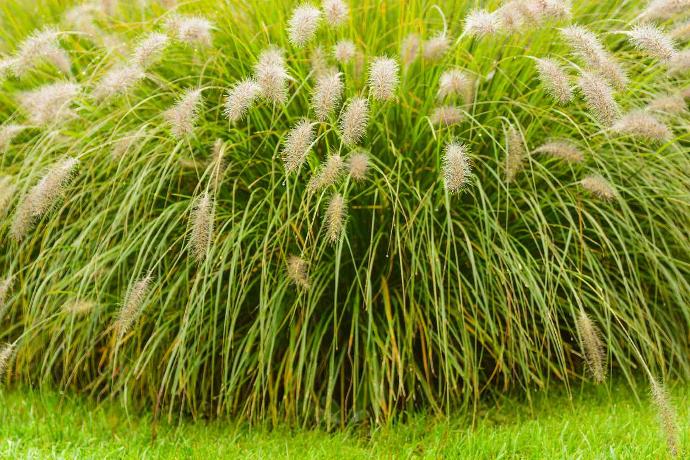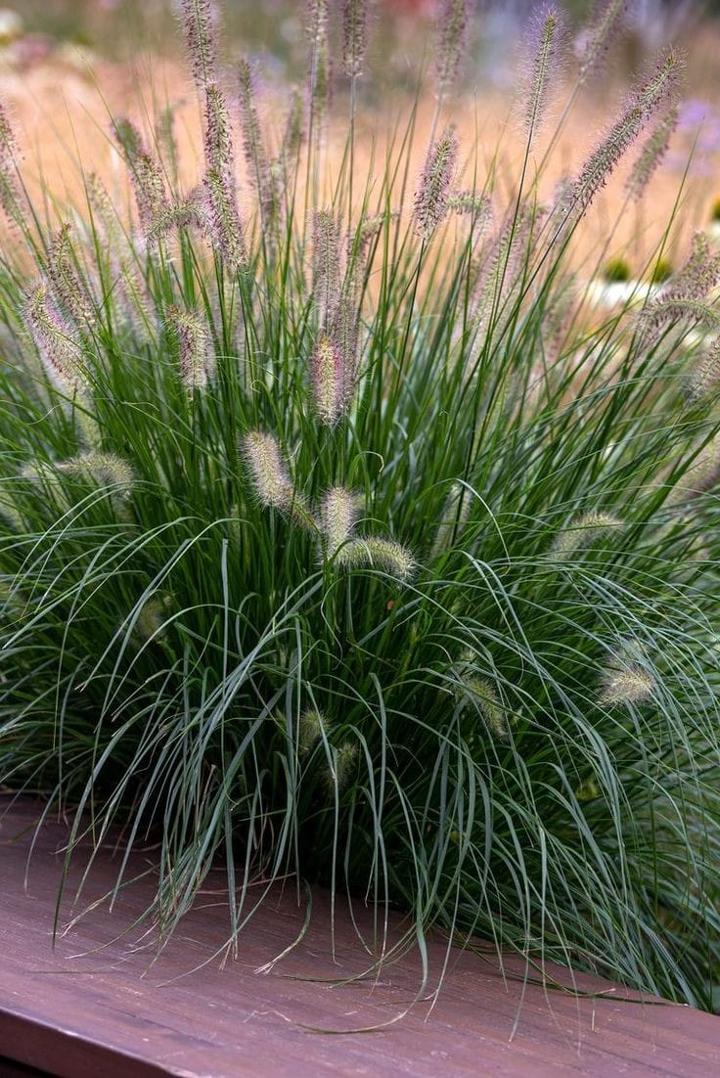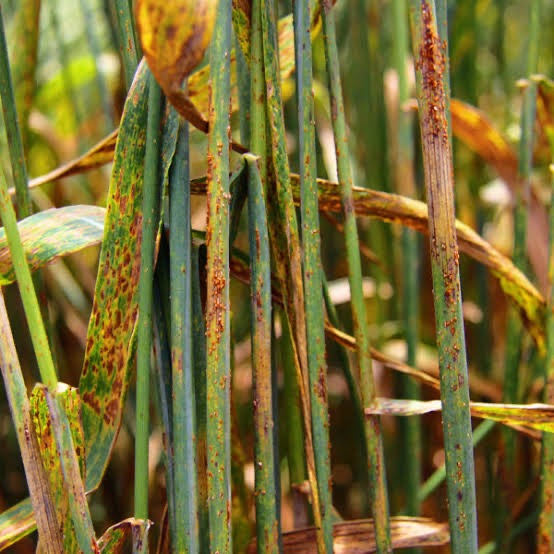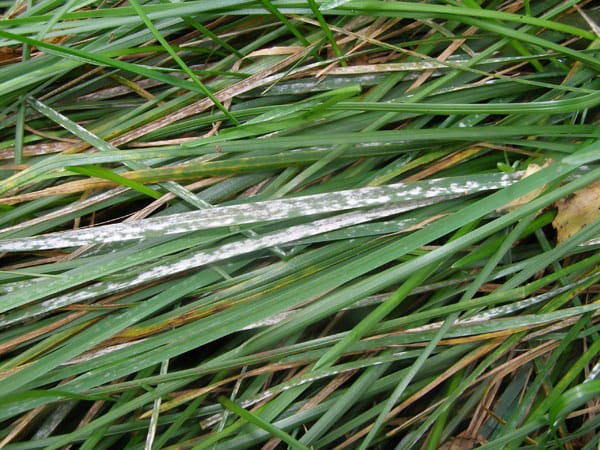Fountain Grass Plant
Fountain Grass, also known as Pennisetum setaceum, is an outdoor ornamental grass. Plant in well-draining soil with full sun exposure. Water consistently and prune to maintain its shape. Fertilize during the growing season for healthy and vibrant foliage.

Habit
Perennial
Height
1 to 3 m
Growth
Fast
Soil
Well-drained sandy soil
Shade
Full Sun
Moisture
Moist
Edible
No
Medicinal
No
Origin
Africa
Climatic Condition
Warm, Dry
Temperature (°)
15 to 35
Humidity (%)
30 to 60
Potting media
Peat-perlite mix
Fertilizers
Low nitrogen, phosphorus
Watering
Low
Plant Weight
2-4 kg
Flowering Time
Year-round
Soil Ph level
6.5 to 8.5
Water Ph level
7.0 to 8.0
Soil EC
0.4 to 1.5
Yield Per Plant
Forage, ornamental
NPK ratio
10:10:10
life Span
50+ yrs
Health Benefits
High salt tolerance, soil conservation.
Suggested Grow Media or Potting Mix ?
50% loam, 25% compost, 25% sand
Suggested Fertigation/Fertilizers
Fertilize every 4 weeks with a balanced fertilizer.
Common Diseases and Remedies
Powdery mildew , rust
Whitish spots appears on foliage , yellow spots or lesions turn to brown colour and spreads overall the plant.
Spray neem oil.
HEALTH BENEFITS
- Not widely known for medicinal benefits but used in some cultures for fodder and soil health.
- Some grass species may have mild anti-inflammatory properties.
What Is A Fountain Grass?
Fountain grass is an ornamental grass known for its graceful, arching leaves that resemble a cascading fountain. It is popular in landscaping due to its beauty and is home to many species such as Pennisetum.
What Are The Different Types Fountain Grass ?
There are different species of fountain grass, including:
1.Pennisetum setaceum (red fountain grass)
2. Pennisetum alopecuroides (water fountain grass)
3.Pennisetum orientale (oriental fountain grass).
Each has unique characteristics and is valued for its aesthetic appeal in landscaping. propagation in small and colorful plastic pots with well-draining soil, and it will remain lowkey throughout its growth journey. These thrive better in a partially shaded spot safe from wind.

How To Care For Fountain Grass ?
1. Location :
Fountain grass thrives in well-drained soil and full sun. Place it in a location that will receive at least 6 hours of direct sunlight per day. Make sure the soil is well-drained to prevent water from coming up through the roots. Water regularly, especially during the dry season, but do not overwater. Mow the lawn in late winter or early spring to encourage new growth. Apply a balanced fertilizer in spring to encourage good growth. Pay attention to the occurrence of pests and diseases and solve problems in time.
2.Sunshine :
plant buddies in their homes due to lack of space get happy with the mention of this areca palm variety. It requires propagation in small and colorful plastic pots with well-draining soil, and it will remain lowkey throughout its growth journey. These thrive better in a partially shaded spot safe from wind.
3. Soil:
Fountain grass generally prefers well-drained soil. Plant in fertile soil rich in organic matter. Water regularly to keep the soil evenly moist, especially during drought. Apply a balanced fertilizer in spring to encourage good growth. Mulch around the roots helps retain moisture and reduce weeds. Prune dead or damaged leaves and foliage in late winter or early spring to encourage new growth. Check soil moisture regularly to prevent water stagnation.
4.Hydration :
Generally prefers well-drained soil and moderate water. Water deeply when the topsoil is dry, but avoid overwatering to prevent root rot. Mulch around the roots helps retain moisture. Water more in warm months and less in cold months. Also consider fertilizing with a balanced fertilizer in spring to encourage healthy growth.

5. Nourishment: Grass thrives in well-drained soil and full sun. Water regularly, especially during dry periods, and apply fertilizer evenly in spring. Prune away dead or damaged leaves and prune all plants in late winter or early spring to encourage new growth. Mulch around the roots helps retain moisture and reduce weeds.
6.Issues:
Keep moisture consistent, but do not keep the soil wet. Fountain grass prefers well-drained soil. Provide full sun as grass grows in full sun. Prune dead or damaged leaves in late winter or early spring to encourage new growth. Use balanced fertilizer in spring to encourage good growth. Avoid too much nitrogen as it can cause bacteria to become floppy. Every few years, divide large boulders to refresh the plant and prevent overcrowding. Watch out for pests such as aphids or diseases such as rust. Take appropriate precautions immediately, such as using insecticides against pests. In cold climates, consider mulching around the base in late fall to protect roots during the winter months.
What Are The Benefits of Fountain Grass Plant?
Fountain grass (Pennisetum setaceum) has many benefits in landscaping and gardening. It adds ornamental value with its beautiful arching leaves and attractive feathery flower heads. Other benefits include erosion control, low maintenance, and flexibility for different soil types. In addition, once the grass is established, it is drought resistant, making it suitable for water conservation.

FAQ's About Growing Fountain Grass
1.What are the ideal growth condition of fountain grass ?
Fountain grass (Pennisetum setaceum) generally thrives in full sun in well-drained soil. It likes hot weather and is drought tolerant once established. Water frequently throughout the growing season, but avoid overwatering to prevent root rot. Prune in late winter or early spring to encourage new growth. Use a balanced fertilizer in spring. It is important to consider your unique climate and local conditions for proper care.
2.Can I Grow Fountain Grass Plants Outdoors?
Yes, you can grow fountain grass plants outdoors. It is a popular ornamental grass known for its elegant, fountain-like appearance. To see growth, make sure it gets full sun, has well-drained soil and is watered regularly.
3.Which pot is best for growing fountain grass plant in india ?
Consider using a good pot that is at least 12 inches in diameter for growing plants in India. Use a good potting mix and add compost for nutrients. Make sure the pot has a water hole to prevent water from dripping. Water regularly and place the pot in a sunny location, as most grasses like full sun. Purify water according to the specific needs of your plants and local climate.
4.How to Propagate Fountain Grass Plants from Seeds or Cuttings
Seed Propagation: Collect mature seeds from weed lines, Sow the seeds in well-drained potting mix, Cover the small seeds with soil and water, Keep in a constantly moist place until the seeds germinate, When the seedlings grow, transfer them to the final location.
Propagation by Cuttings: Use cuttings from mature grass plants and ensure each cutting has multiple nodes, Remove excess leaves from the bottom of the cutting, Dip the insert in hormones to stimulate root growth, Plant cuttings in pots filled with well-drained rooting medium, Keep the soil moist at all times and provide indirect sunlight, Once roots have formed, transfer the cuttings to their final location, Remember to provide good conditions for propagation to be completed and it is often beneficial to start the process in the spring or summer when the plant is growing.
5.What are some popular varieties of fountain grass plant?
Popular types of lawn grass plants include Pennisetum setaceum 'Rubrum' (Purple Fountain Grass), Pennisetum alopecuroides (Fountain Grass) and Pennisetum setaceum 'Skyrocket' (Skyrocket) Fountain. Each has unique characteristics such as color and size, making it a popular choice for landscaping.

